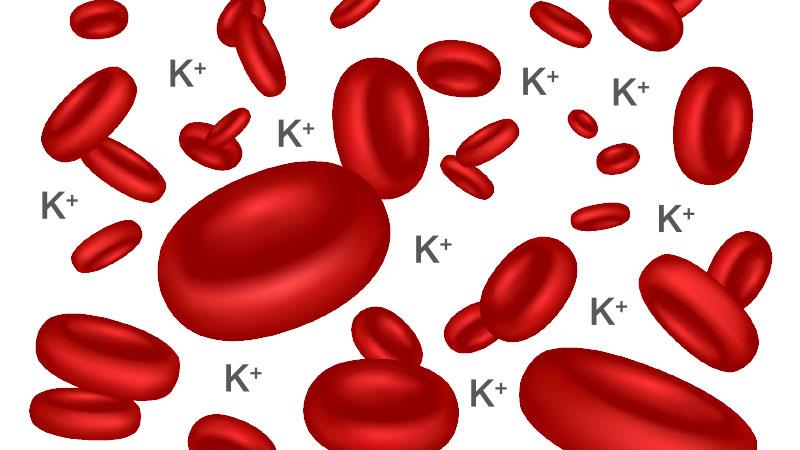Potassium binder allows optimized MRA therapy in hyperkalaemic HFrEF patients





Treatment with the potassium binder sodium zirconium cyclosilicate (SZC) stabilizes potassium levels in patients with heart failure with reduced ejection fraction (HFrEF) during spironolactone optimization, as shown in the prospective, randomized-withdrawal REALIZE-K trial.
At 6 months, 71 percent of patients treated with SZC achieved the primary endpoint of normokalaemia while on spironolactone ≥25 mg daily without rescue therapy for hyperkalaemia compared with 36 percent of those on placebo (odds ratio [OR], 4.45, 95 percent confidence interval [CI], 2.89 –6.86; p< 0.001). [J Am Coll Cardiol 2024;S0735-1097(24)10430-5]
Mineralocorticoid receptor antagonists (MRAs), such as spironolactone, improve outcomes in patients with HFrEF but are underused in clinical practice due to concerns about hyperkalaemia. “The real and perceived risks of hyperkalaemia are the primary reason for down-titration and discontinuation of MRAs in HFrEF patients,” said Dr Mikhail Kosiborod from the Saint Luke’s Mid America Heart Institute, Kansas City, Missouri, US, during his presentation at AHA 2024.
In REALIZE-K, SZC enabled optimal spironolactone dose in HFrEF patients. “Overall, there were no imbalances in adverse events or serious adverse events. The number of heart failure events, oedema, and hyperkalaemia events was relatively small, but were higher with SZC than placebo,” Kosiborod said. “In the post-hoc analysis, this difference appeared to be mostly centred in patients with very high NT-proBNP levels at baseline.”
A word of caution
Discussant Dr Larry Allen from the University of Colorado Anschutz Medical Campus, Aurora said REALIZE-K provides important data on the long-term, regular use of SZC to enable guideline-directed medical therapy.
However, he said potassium binders should be used cautiously, chiefly because of the significant sodium load they can produce in the body, which can be an issue. Another critical point is the issue of polypharmacy, as “any medications a patient is taking must be administered 2 hrs before or after the potassium binder.”
REALIZE-K enrolled patients from eight countries with symptomatic NYHA class II-IV HF and a left ventricular ejection fraction ≤40 percent. They either had hyperkalaemia at the start of the study (n=95) or were at risk of developing it (n=271) due to older age or the presence of chronic kidney disease.
The population was well optimized on HFrEF therapies other than MRA at baseline, with 99 percent on an ACE inhibitor, angiotensin 2 receptor blocker, or an angiotensin receptor-neprilysin inhibitor.
During an open-label run-in period, all patients received spironolactone, titrated to a target of 50 mg daily. To normalize potassium levels, oral sodium SZC 10 g was given thrice daily in patients with hyperkalaemia or up to 48 hours in those at risk of developing hyperkalaemia. It was eventually reduced to a maintenance dose of 10 g once daily.
Those with normal potassium levels (3.5–5.0 mEq/L) on SCZ and optimal doses of spironolactone (≥25 mg daily) were randomly assigned to continue with SZC or switch to placebo for 6 months.
Normokalaemia achieved
In a sensitivity analysis of the primary endpoint that used a more conservative potassium threshold to define hyperkalaemia, 84.8 percent of patients on SZC achieved normokalaemia on spironolactone ≥25 mg/daily compared with 50.9 percent of patients on placebo (p< 0.001).
Additionally, SZC was more likely than placebo to result in improvements in four out of five secondary endpoints: normokalaemia on the randomized dose of spironolactone without rescue therapy for hyperkalaemia (58 percent vs 23 percent), normokalaemia on spironolactone ≥25 mg/daily (81 percent vs 50 percent), time to first hyperkalaemia episode (hazard ratio [HR], 0.51), and time to first decrease or discontinuation of spironolactone due to hyperkalaemia (HR, 0.37).
At 6 months, there were no between-group differences seen in the quality of life assessed using the Kansas City Cardiomyopathy Questionnaire clinical summary score.
Death or worsening HF occurred in 11 percent of patients in the SZC group vs 3 percent in the placebo group (nominal log-rank p=0.034). One cardiovascular death was reported in each group, while HF events were higher with SZC than placebo (10 percent vs 2 percent).
In a post-hoc exploratory analysis, adjudicated HF events occurred in seven of 24 patients in the SZC arm vs one of 16 in the placebo group. Among those with NT-proBNP levels ≤4,000 pg/mL, adjudicated HF events occurred in three of 75 SZC patients vs one of 80 placebo-treated patients.
At 6 months, NT-proBNP levels were higher in the SZC group than placebo, but the difference did not reach statistical significance (p= 0.061). Additionally, there was no difference between the groups in daily doses of loop diuretics.
Moving forward, Allen said more studies are warranted to identify which patients are truly at high risk for hyperkalaemia and likely to benefit from SZC therapy versus those who can be managed with diet and blood tests.